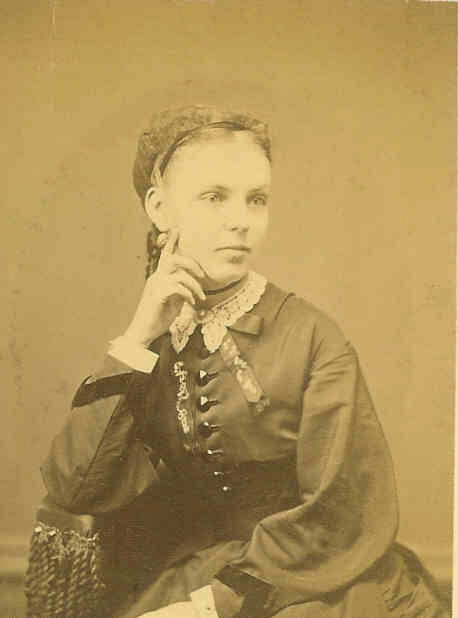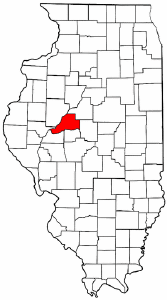Please SHARE this with others that may wish to know more about Mason County, Illinois. This history is 1841 to circa 1880.
Passing down through the years 1849 and 1850, we find the names of Samuel Adkins, Granville Cheny, Vincent Singleton and Alexander Holler.
These all settled in the southwest corner of the township, on what is known as Bull’s Eye Prairie. Adkins and Holler were from Tennessee, Cheny from Tennessee or Kentucky, and Singleton probably from the State last mentioned.
Adkins settled in the northwest corner of Bull’s Eye, and, after three or four unsuccessful attempts at farming, sold out to Henry Cease, lived in different parts of the township until five or six years ago, when he went west to Kansas.
Cheny located on the north edge of the prairie, but finally moved to De Witt County, where, quite recently, he lost his life by accident. Singleton remained
a few years, moved to Salt Creek, thence to Mason City, of which he is at present a citizen. Alexander Holler lived in the township but a short time,
moved into Havana Township, and died a number of years ago.
William G. Stone, now a resident of Havana, was a citizen of Sherman as early as 1850. Stone was originally from New Jersey, but came from Pennsylvania to Mason
County. John Spellman and Amos Heater came in 1851, and were both Pennsylvanians. Heater settled on Section 9, and resides on the farm originally entered and improved. Spellman lived only two weeks after completing his house and moving into it. His widow, since married, is still a citizen of the township. His sons, Henry and George, went west to Nebraska some years since. William entered the army in the early part of the war. He was, doubtless, an ardent admirer of the sentiment expressed in the couplet,
” He that fights, and runs away,
May live to fight another day,”
for, after the first engagement, he ingloriously deserted, and was seen among his
comrades no more. He is supposed to have died some years since, though this BB fact is not definitely known. H. Elderbush settled in the edge of Crane Marsh timber about 1852 or 1853 ; the exact date of his coming cannot now be ascertained. James M. Samuels, one of Sherman’s most prosperous citizens, located on the northwest corner of Section 36, where he still resides. The family,
originally from the Old Dominion, had emigrated to Kentucky in 1815, and settled near Hopkinsville when that thriving city was a small village of not more than one hundred inhabitants.
In the spring of 1835, his father, Andrew Samuels, came to Illinois, and first settled in Morgan County. Ten years afterward, he settled in what is now Bath Township, Mason County, on the
farm now occupied by his youngest son. The remains of himself and wife lie entombed in the cemetery at Bath. ^When James M. settled here twenty-four years ago, there were none living east of him in the township, and, with the exception of Mrs. Devenport and family, none south before reaching the set- tlers in Crane Creek. To one visiting his pleasant home, occupying as it does, one of the most eligible sites in the entire township, the matter of wonder is, that a location so desirable should have been left unoccupied to so late a date, while others, far less so, had been occupied and improved fifteen or twenty years earlier. His connection with the village of Easton will be given in the
history of that village. Jacob Kissler and family, consisting of Mark A., William, James, Thomas, Charles, John and three daughters, came from Washington County, Penn., and first stopped in Havana. In 1859, they came to the township, and, with the exception of Thomas, are enterprising citizens to-day.
Thomas returned to Pennsylvania not long after coming. There are others, doubtless, whose names are worthy of mention as being among the early settlers of this section, but whose time of coming and date of settlement cannot beaccurately given.
TRADING-POINTS, MILLING, ETC. What Chicago is to Illinois and the West, Havana was to the early settlers of Mason County the point to which all their produce must be brought to find
sale and shipment, and in which they obtained their dry goods and groceries. Hogs were sometimes driven to Beardstown and slaughtered, as, at one time, it enjoyed the distinction of being the ”
Porkopolis ” of the entire region. Meal was obtainable in limited quantities at Mount’s mill, on Crane Creek, but,
when flour was to be procured, they were obliged to make the journey to Woodrow s or Kinman’s mill, on Mackinaw, or to Wentworth’s, on Otter Creek, in Fulton County. The former, though more distant, were generally preferred on account of the scarcity of the ‘ ; needful “to pay the toll at Ross’ Ferry (now Havana) which was 87 cents the round trip. It was by no means an unusual
occurrence to consume four or five days in making the journey back and forth to mill, the length of time being governed somewhat by the period one might be required to wait for his grist to be ground.
The mills of Sim monds andMcIIarrv, on Quiver, built at a later date, brought almost to their doors con- veniences which the early settlers scarcely dared dream of, much less expect in
their own day and generation. All mail matter was received at Havana. There was never a mill built or a post office established within her borders until since the advent of railroads through this part of the county. They enjoyed the distinction of having a blacksmith-shop convenient to them at quite an early day. Martin Scott opened a shop just across the line, in Havana Township, as early as 1848 or 1844.
Eli Hibbs built a shop in 184 8, the first in the township, and has worked at his trade more or less every year since.
Before t he building of schoolhouses, the “school marm ” was abroad in the land. Miss Eliza Dentler was the first to instruct the youthful Suckers in this part of the county. The school was kept at the residence of her mother. She was regarded as a first-class teacher at the time, though it is probable that herliterary attainments would fail to secure for her an appointment in most of our
city schools of to-day. The first schoolhouse built in the township was designed to be located on the southeast corner of Section 8, on land belonging to James H. Chase. Upon a more accurate survey, it was found, however, to be on Section 9, on the land of Amos Heater. The building was erected in 1846-47, and Abe Millerson presided over the destinies of the first school. At present, the township has seven good school buildings and makes ample provision for the education of all her youth. The circuit-rider, who came to proclaim messages
of divine love, followed early in the wake of the first settlers. Rev. Michael Shunk was, perhaps, the first through this section. Revs. Moreland and Hardin Wallace were here in an early day. Moreland was a man remembered for his more than ordinary ability in the pulpit, while Wallace was a young man noted for his fine singing. Of the latter, it is said he could open services, deliver his
sermon, and close the exercises all inside of twenty minutes, especially when a few handsome young ladies were in his audience. Moreland was sent from his
charge here to Purgatory Swamp, a name suggestive of the fact that all his eloquence and persuasive powers would be needed to reclaim its inhabitants.
A small frame church, the only one in the township outside of the village of
Easton, was erected by the German Evangelical Society in 1855 or 1856.nAmos Heater and wife, John Shinglemeyer and family, Jacob Shinglemeyer and family, Henry Mehlhop, P. Morgenstern and others were among the early communicants. The first practitioner of the healing art was William Coder, who had settled in the eastern part of Havana Township in 1838. He was a
minister of some reputation as well as a physician, and sought by his labors to heal spiritual as well as physical infirmities. Dr. Allen, from Indiana, was a man of fine abilities, and was also here at quite an early date.
FIRST BIRTHS, DEATH AND MARRIAGE.
Elizabeth Hampton, daughter of John Hampton, born January 24, 1840, and Mahlon Hibbs, son of Eli Hibbs, born May 8, 1840, were the first births to occur in the township. Hampton’s daughter attained to womanhood’s estate, and was living a short time ago. Hibbs’ son died at the age of nine months.
The first death to occur was that of Mrs. Thomas K. Falkner, whose death took place in May, 1839. She was buried at the then recently established burying-ground on the farm of Robert McReynolds. The first interment in the cemetery was that of Grandma Fessler in 1838. The honor of the first wedding in this section belongs either to John McReynolds and Catharine Dentler, or to Alfred Howell and Eliza Falkner, but which was first, no one living here, at present, is able to assert with positive assurance. Their example, in that respect at least, has been followed by many others of later years.
The war record of Sherman is alike creditable to herself and the county of which she is a part. The patriotism of her citizens was equal to the demands of her country upon her at all times. All calls were promptly filled, and she furnished men even in excess of her quota. At one time, the Republican party was in the ascendancy, but gradually the scales turned, and, for the past few years,
the Democratic party has carried the day. M. H. Lewis was the first Supervisor of the township. Alfred Athey guards her interests at present, and ha held the office by successive re-elections for several terms.
FRIDAY- Part 3, The History of Easton


